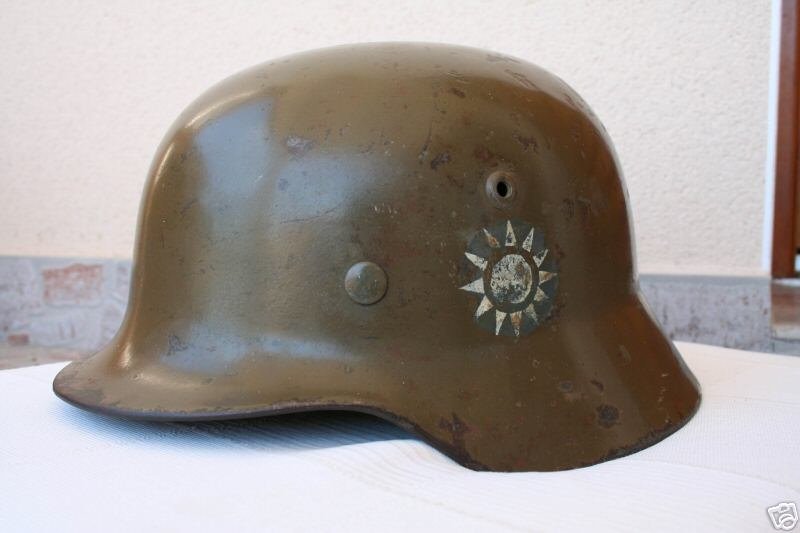Sunday, August 19, 2007
海軍元帥鄧尼茲的權杖及其人偶 DÖNITZ BATON




There are actually TWO original batons (called Admiralstab) from Grossadmiral Dönitz. After he got the first one, he made a few changes and had a second one made. One was taken by the Shropshire Light Infantry and is in their museum in England, the other is in the fantastic museum in Hamburg along with the batons of previous Grossadmiral Raeder and four that belonged to princes of Germany in the days of the Empire.
The museum of PETER TAMM(Hamburg), here are two items of great interest in this fantastic place. The top one is the Admiralstab of Grossadmiral Erich Raeder. And the lower item is the Admiralstab (Admiral's baton) of Grossadmiral Karl Dönitz. This museum is filled with great artifacts.
The other baton is held in the Shropshire Regimental Museum in Shropshire Castle, at Shrewsbury, the capital of that English County in UK. It was donated to the Museum by Major General J.B. Churches the captor of Admiral Dönitz, he commanded the Infantry Brigade which took Flushing and arrested the Admiral's Nazi Government in May of 1945. The Curator is Peter Duckers at this Museum.
The second phptograph of the Admiral's Baton, which is taken from Page 302 of the book: TORPEDO LOS-- THE FACINATING WORLD OF U-BOAT COLLECTIBLES by GORDON WILLIAMSON.
Published by R. JAMES BENDER USA 2006.
Karl Dönitz was born in Berlin-Grenau on 16th September, 1891. He enlisted as a sea cadet in 1910 and after naval training was commissioned as an officer in the German Navy in 1913.
During the First World War Dönitz served on a cruiser in the Mediterranean before being transferred to submarines in October 1916. He was captured on 4th October 1918 and remained a prisoner of war until July 1919.
Dönitz remained in the German Navy and in 1935 was put in charge of the new U-Boats being developed. However he clashed with Hermann Goering who was unwilling to supply the necessary capital to spend on the navy. Doenitz said that he needed 1,000 submarines to win any future war with Britain but by 1939 he had only 57.
At the beginning of the war the German Navy was equipped with the 750-ton Type VII U-boat. These proved too small for Atlantic operations and larger long-range types were later introduced. Dönitz developed the idea of fighting in wolf packs. Between 1940 and 1943 U-boats took a heavy toll of Allied shipping in the Atlantic, Arctic and the Mediterranean.
In January, 1943 Adolf Hitler sacked Erich Raeder and appointed Dönitz as Commander in chief of the German Navy.
The Allies gradually began to introduce successful anti-submarine strategies. This included the convoy system, long-range aircraft patrols, improved antisubmarine detectors and depth charges. By May 1943 German U-Boats were forced to withdraw from the Atlantic.
Dönitz gave permission for a radically improved U-boat to be built in 1944. Working closely with Albert Speer, the Minister of Armaments, Germany were producing 42 of these all-electric boats a month by 1945. However, they were too late to make an impact on the outcome of the Second World War.
Adolf Hitler selected Doenitz to become head of state after his suicide on 30th April, 1945. After forming a new government he negotiated Germany's surrender on 8th May.
At the Nuremberg War Crimes Trial Dönitz was found guilty of war crimes and was sentenced to ten years in prison. After his release in October, 1956, he wrote his autobiography, Memoirs: Ten Years and Twenty Days (1959). Karl Dönitz died on 24th December, 1980.

